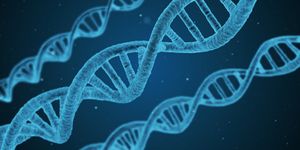Clay-Based Technology Helps Form Blood Vessels
Angiogenesis is the biological process of forming new blood vessels.
The process of angiogenesis serves as one of the major clinical challenges in wound healing and tissue implants. Scientists at Texas A&M University have sought to address this clinical issue by developing clay-based technology that will seek to assist in the process of angiogenesis by delivering therapeutic proteins.
The research team, led by members of the Inspired Nanomaterials and Tissue Engineering Lab in the Department of Biomedical Engineering, have designed this technology that introduced a new type of two-dimensional clay known as nanosilicates. The nanosilicates will seek to deliver multiple specialized proteins known as growth factors into the body in order to stimulate new blood vessel formation. According to biomedical engineering assistant professor, Dr. Akhilesh K. Gaharwar, the clay is designed to lengthen the release through its high surface area and charged characteristics allowing blood vessels time to form. "Clay nanoparticles work like tiny weak magnets that hold the growth factors within the polymeric hydrogels and release very slowly," Gaharwar said. "Sustained and prolonged release of physiologically relevant doses of growth factors are important to avoid problems due to high doses, such as abrupt tissue formation."

Additionally, Dr. Kayla Bayless, a co-investigator of the study from the Department of Molecular and Cellular Medicine, explains that the clay maintains the organization of the growth factors, prevents abnormal growth, and moderates the activity of surrounding cells. Gaharwar also believes that establishing clay nanoparticles as the platform technology for therapeutic delivery, then the research will greatly impact the future of bioactive scaffolds and implants.
The research study was published in Advanced Biosystems and funded by the Division of Chemical, Bioengineering, Environmental and Transport Systems of the National Institute of Science, the National Institute of Biomedical Imaging, and Bioengineering of the National Institutes of Health and by the National Science Foundation.
Source: Texas A&M University








